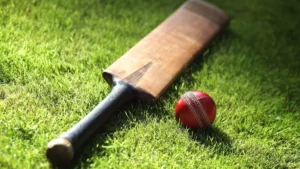The famous figure of Bangladeshi cricket circles, veteran curator Gamini de Silva, eventually called time on his 16-year relationship with the Bangladesh Cricket Board. Before he left Dhaka, he talked us through his experiences, the challenges, and his philosophy as the curator responsible for the Sher-e-Bangla National Cricket Stadium pitches in Mirpur.
While Gamini is primarily known for developing low and slow wickets that played a role in Bangladesh winning its first-ever Test victories against England and Australia, he shared his thoughts in an exclusive interview, looking back at the collaboration with coach Chandika Hathurusingha and the changes in pitch preparation in Bangladesh.
Collaborating with Chandika Hathurusingha: “We Had an Understanding of One Another”
Gamini de Silva had a profound professional relationship with Chandika Hathurusingha, who was the head coach of Bangladesh when it experienced some of its more fruitful years.
“We’ve known each other since our teenage days in Sri Lanka. Working with him was easy, we both wanted the same thing: to help Bangladesh win,” said the curator.
The partnership proved instrumental in Bangladesh’s rise in world cricket, with the team recording memorable victories at home and abroad.
Home Advantage and Pitch Preparation Philosophy
Asked about the criticism of Bangladesh’s spin-friendly wickets, Gamini was forthright:
“The correct term is home board advantage. Every country prepares pitches based on what suits their team best. It’s not my personal property the home team should have the advantage.”
He made it clear that pitches were always prepared upon team management’s request and that practice wickets were prepared to simulate conditions abroad ahead of an overseas tour.
Addressing Criticism from Players
The players had reportedly complained about limited access to practice facilities. Gamini further clarified that his responsibility was for those under BCB contracts.
“If someone isn’t contracted, I can’t let them practice. But I’ve never refused requests to practice from contracted players,” he explained.
Ground Overuse: The Biggest Challenge in Bangladesh Cricket
De Silva cited overuse of the Mirpur ground as one of the main reasons behind pitch deterioration.
“Mirpur has hosted 218 international matches in just 19 years – more than Melbourne has in 148 years. The ground stays busy all year with domestic, international and BPL games,” he revealed.
He urged the Bangladesh Cricket Board to develop more grounds and practice facilities for managing an increasing calendar of cricket. The difficulties with grass and clay: The science behind the Mirpur pitch.
Explaining the technical difficulties of maintaining the Sher-e-Bangla wicket, Gamini shared insights into grass and clay maintenance:
“Grass roots need to grow three to four inches deep to hold the clay together. If the roots aren’t deep enough, the surface breaks.”
“Weather plays a huge role. A little extra sun or unexpected rain can completely change how a pitch behaves.”
He admitted to using dead grass on certain wickets to prevent them from wearing out too quickly, which is also common in other countries.
On Local Conditions and Clay Import Proposal
Gamini said that Bangladesh’s local black clay has too much sand, which becomes hard to maintain during the dry season.
“I proposed importing clay in 2011. The paperwork was ready, but the government didn’t grant permission due to environmental concerns,” he said.
He further said that the clay of Pakistan – used in Dubai as well would be ideal for Bangladesh pitches if import restrictions were lifted.
Mirpur’s Identity: Naturally Spin-Friendly
Asked whether Mirpur should remain a spin-dominant venue, Gamini agreed:
“Every country has their venues that suit certain bowlers. India has spin tracks, Australia has bounce and England has swing. Mirpur is naturally spin-friendly and that’s fine, the key is to build more grounds like Sylhet or Chittagong.”
The Future of Pitch Management in Bangladesh
Bangladesh’s cricket infrastructure has grown, but not at the rate for which the game has expanded, states the veteran curator.
“We now have separate teams for Tests, ODIs, and T20Is. That means more practice, more matches and more strain on limited facilities. The only solution is more grounds,” he stressed. Despite the hurdles, Gamini remains proud of his contributions: “I never said no to any request. I just did my job. If I hadn’t, Bangladesh cricket wouldn’t have progressed this far.”
ALSO READ: IPL 2026: Complete List Of Player Trades, Auction Date, And Key Updates





















